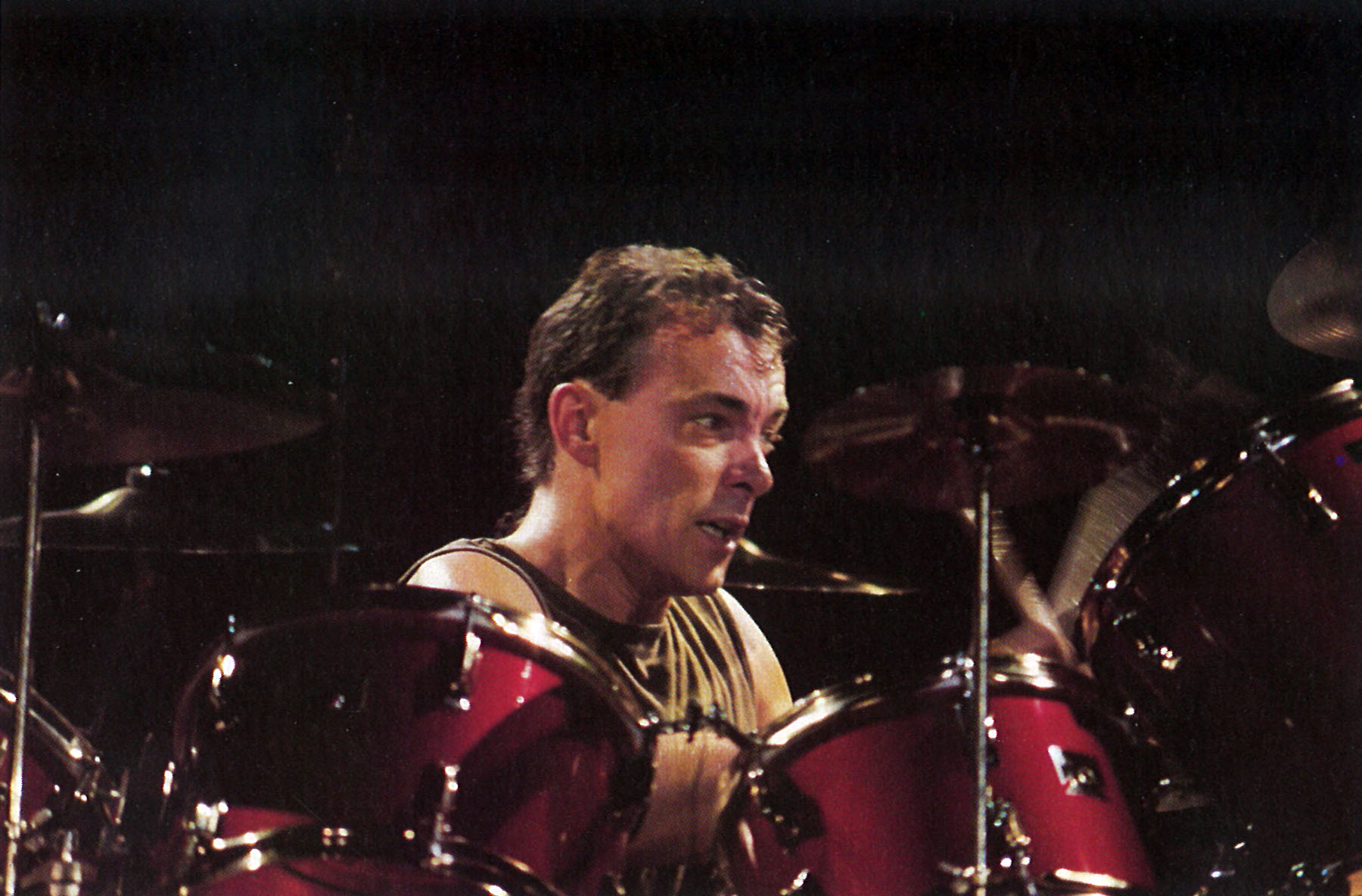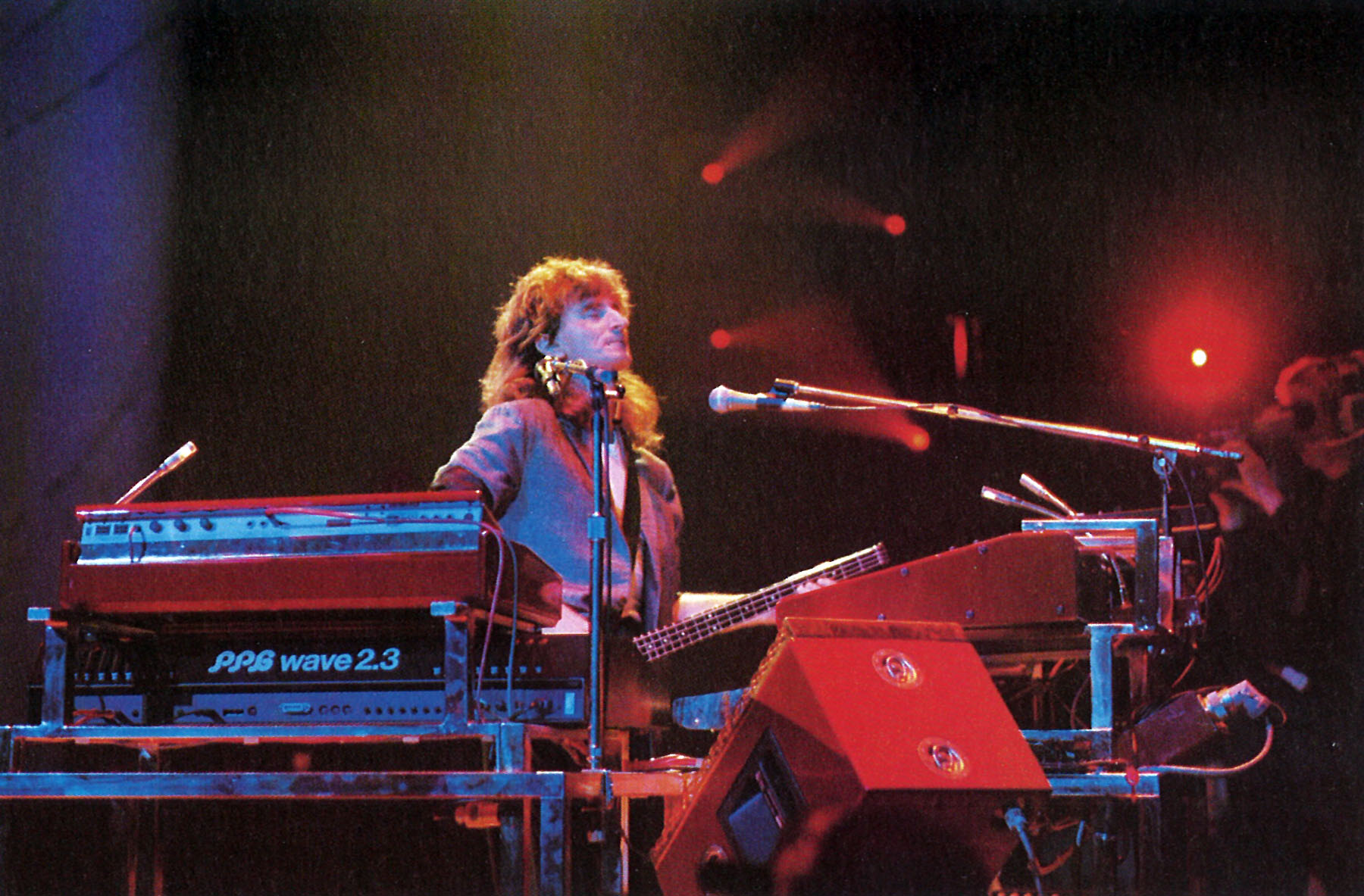:format(jpeg):mode_rgb():quality(90)/discogs-images/R-1368153-1274213046.jpeg.jpg)
Different Degrees

 “Grace Under Pressure” was an emotionally heavy experience, the darkest, borderline nihilistic the trio had gotten. As the calendar revolved into 1985, Rush released “Power Windows”, a record that showed the band still entrenched in keyboards and new wave influences, while dialing back on the heavy topics that were expressed on the previous release. However, the band has not given up expressing topics and concerns that were occurring around this time period, in this case the album’s topics cover the theme of power. “Power Windows' ' feels more exploratory, more like the band is looking down and observing the happenings of the world, while giving their commentary on these issues. This project showcases Rush at their most socially and politically conscious up to that point.
“Grace Under Pressure” was an emotionally heavy experience, the darkest, borderline nihilistic the trio had gotten. As the calendar revolved into 1985, Rush released “Power Windows”, a record that showed the band still entrenched in keyboards and new wave influences, while dialing back on the heavy topics that were expressed on the previous release. However, the band has not given up expressing topics and concerns that were occurring around this time period, in this case the album’s topics cover the theme of power. “Power Windows' ' feels more exploratory, more like the band is looking down and observing the happenings of the world, while giving their commentary on these issues. This project showcases Rush at their most socially and politically conscious up to that point.
“Power Windows' ' sees the band's greatest exploration of the synthesizer direction. The project’s focus on synths is greater than ever, becoming a driving force of the tracks similar to “Grace Under the Pressure”, and similar to that album works to its advantage. For example the second track “Grand Designs” has a brilliant synth introduction that depicts this spacious quality and depicts these mental images of high skyscrapers, a sort of sonic vision of the future. Other songs such as “The Manhattan Project” elicits this great, soaring feeling assisted by the synth work, but is then effectively contrasted a darker, more ominous tone halfway through, conveying the horror that this experiment would eventually lead towards. The final track, “Mystic Rhythms” is probably the most synth heavy on the record, with an and complement the bass and guitars, giving off this ethereal, dreamlike quality. One of Rush’s most experimental tracks, and another underrated gem in their catalog.
Accompanying the synths is the lyrical content, which has the trio at some of their most biting and cynical of their career. Tracks such as “Big Money”, “Grand Designs”, and “Territories” are biting critiques on multiple different issues, many of which are relevant in today's world. Themes such as the power of money, how nationalism can blind others into mindless wars, how superficiality is hollow and only serves to prop up a visually appealing facade, “Power Windows” is not holding back any punches when it comes to its societal critiques. Manhattan Project” discusses the famous Manhattan Project that led to the creation of the atomic bomb, and alludes to the tragic applications that this invention would lead towards. Luckily, the composition of the tracks allows for the heavier thematic elements to be more digestible and presentable to the listener, which helps the band avoid coming off as preachy. Though fortunately, the band doesn’t go into full blown cynicism, as tracks such as “Marathon” serve a function similar to that of “Countdown”, serving as praise to human ingenuity and the fire that is in each and every one of us.
 If there is one area that might turn off newcomers at first, it’s the presentation overall. “Power Windows' ' is probably the most “eighties” album Rush produced up to this point in the decade. In a pursuit to be with the musical landscape of the mid-eighties, the tracks haven’t aged as well as previous releases have. In addition, the record suffers the same problem as “GuP”, with a second side that is weaker than the first side, with “Middletown Dreams” being a decent, melancholic song but not as impactful as it could have been, and “Emotion Detector” not being an especially gripping track.
If there is one area that might turn off newcomers at first, it’s the presentation overall. “Power Windows' ' is probably the most “eighties” album Rush produced up to this point in the decade. In a pursuit to be with the musical landscape of the mid-eighties, the tracks haven’t aged as well as previous releases have. In addition, the record suffers the same problem as “GuP”, with a second side that is weaker than the first side, with “Middletown Dreams” being a decent, melancholic song but not as impactful as it could have been, and “Emotion Detector” not being an especially gripping track.
“Power Windows” is an album that grows with greater appreciation, with each listen revealing more sonic nuggets than the last. It’s a record that showed the trio exploring greater concepts with the help of the current technology at the time and producing solid to excellent results. Two years later, Rush would unleash another album...to less than satisfactory results.



Comments
Post a Comment